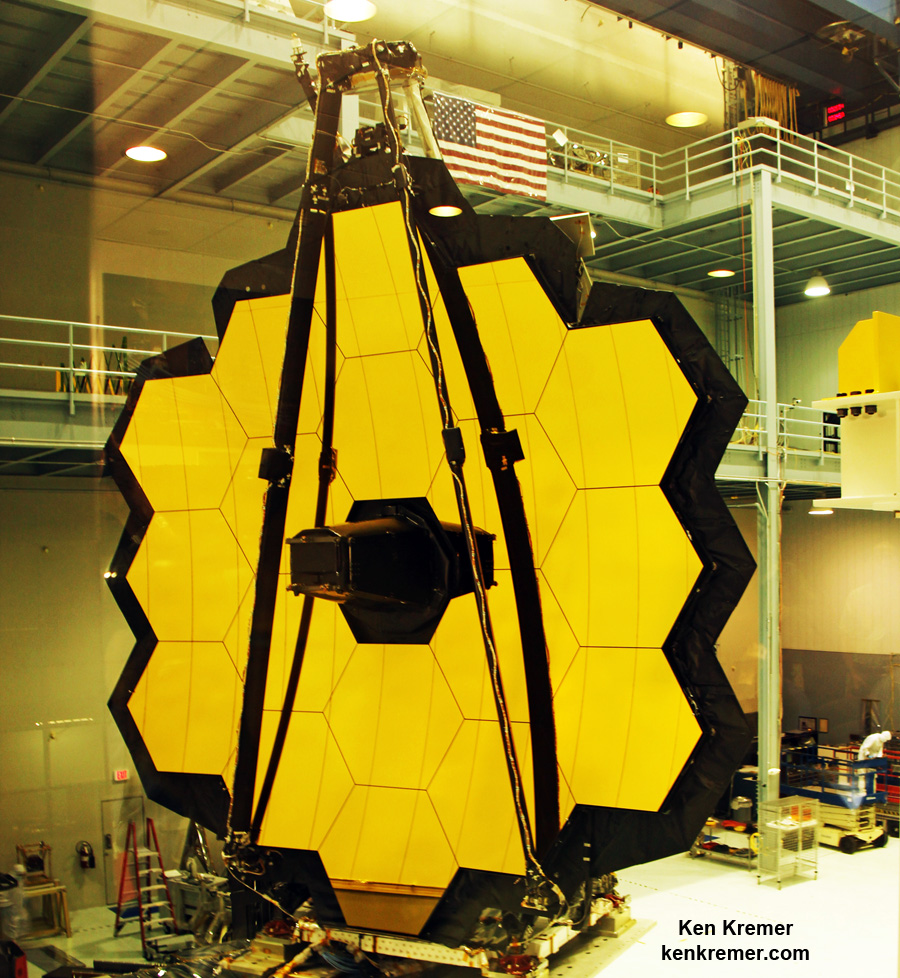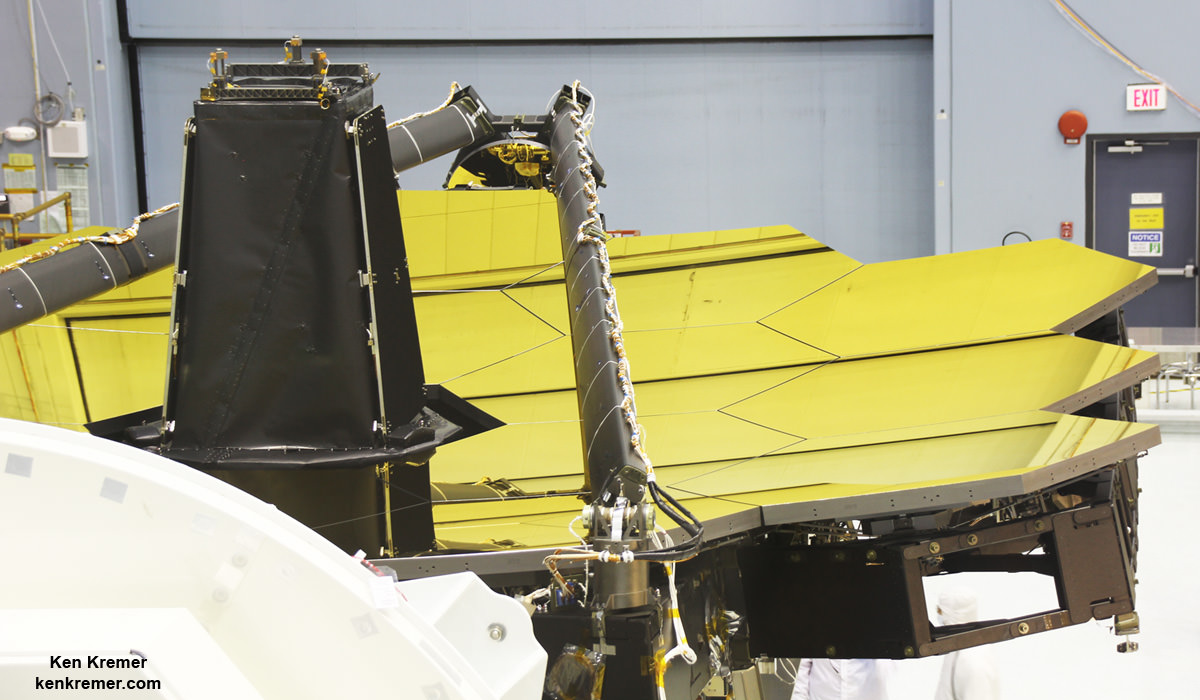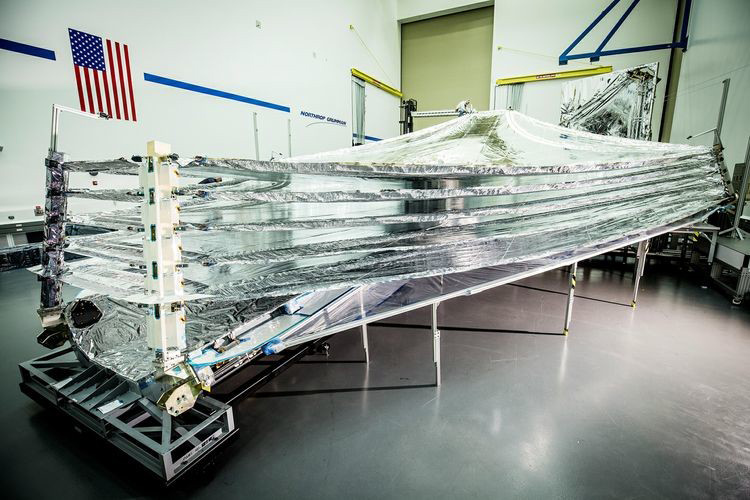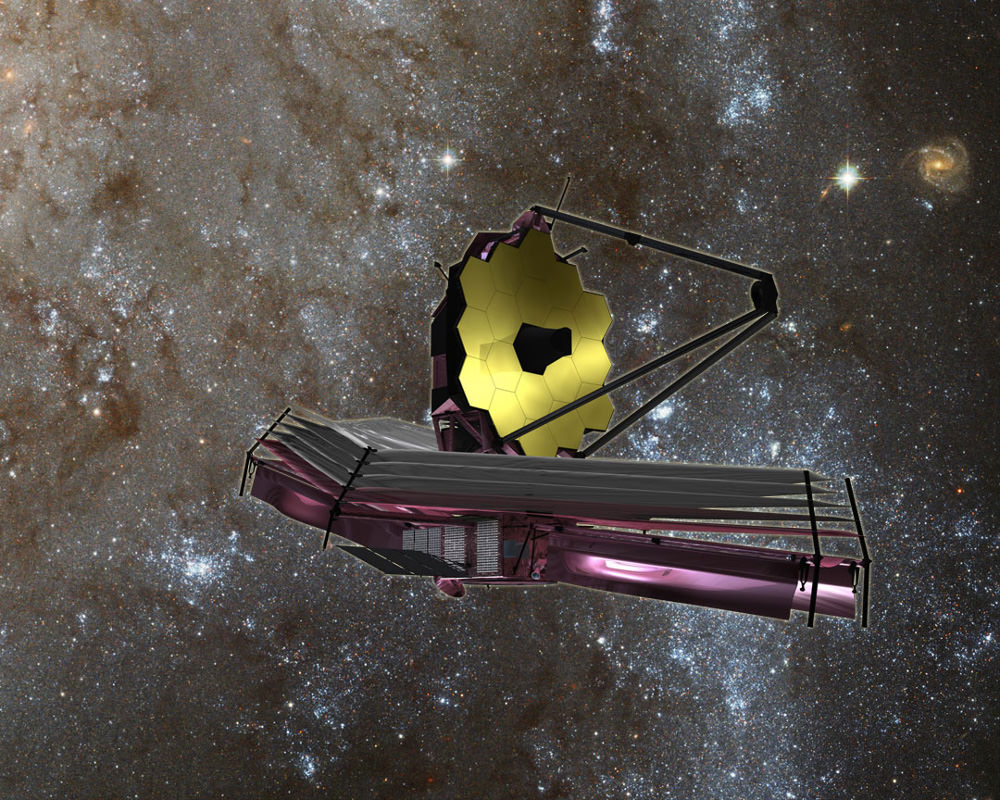
The most powerful space telescope ever built will have to wait on the ground for a few more months into 2019 before launching to the High Frontier and looking back nearly to the beginning of time and unraveling untold astronomical secrets on how the early Universe evolved – Engineers need a bit more time to complete the Webb telescopes incredibly complex assembly and testing here on Earth.
Blastoff of NASA’s mammoth James Webb Space Telescope (JWST) has been postponed from late 2018 to the spring of 2019.
“NASA’s James Webb Space Telescope now is planning to launch between March and June 2019 from French Guiana, following a schedule assessment of the remaining integration and test activities,” the agency announced.
Until now the Webb telescope was scheduled to launch on a European Space Agency (ESA) Ariane V booster from the Guiana Space Center in Kourou, French Guiana in October 2018.
“The change in launch timing is not indicative of hardware or technical performance concerns,” said Thomas Zurbuchen, associate administrator for NASA’s Science Mission Directorate at Headquarters in Washington, in a statement.
“Rather, the integration of the various spacecraft elements is taking longer than expected.”
NASA’s says the currently approved budget will not bust the budget or reduce the science output. It “accommodates the change in launch date, and the change will not affect planned science observations.”
NASA’s $8.8 Billion James Webb Space Telescope is the most powerful space telescope ever built and is the scientific successor to the phenomenally successful Hubble Space Telescope (HST).
The Webb Telescope is a joint international collaborative project between NASA, the European Space Agency (ESA) and the Canadian Space Agency (CSA).

Since Webb is not designed to be serviced by astronauts, the extremely thorny telescope deployment process is designed to occur on its own over a period of several months and must be fully successful. Webb will be positioned at the L2 Lagrange point- a gravitationally stable spot approximately 930,000 miles (1.5 million km) away from Earth.
So its better to be safe than sorry and take the extra time needed to insure success of the hugely expensive project.

Various completed components of the Webb telescope are undergoing final testing around the country to confirm their suitability for launch.
Critical cryogenic cooling testing of Webb’s mirrors and science instrument bus is proceeding well inside a giant chamber at NASA’s Johnson Space Center in Texas.
However integration and testing of the complex multilayered sunshield at Northrup Grumman’s Redondo Beach, Ca. facility is taking longer than expected and “has experienced delays.”
The tennis court sized sunshield will protect the delicate optics and state of the art infrared science instruments on NASA’s Webb Telescope.
Webb’s four research instruments cannot function without the essential cooling provided by the sunshield deployment to maintain them at an operating temperature of minus 388 degrees F (minus 233 degrees C).
The Webb telescopes groundbreaking sunshield subsystem consists of five layers of kapton that will keep the optics and instruments incredibly cool, by reducing the incoming sunside facing temperature more than 570 degrees Fahrenheit. Each layer is as thin as a human hair.

“Webb’s spacecraft and sunshield are larger and more complex than most spacecraft. The combination of some integration activities taking longer than initially planned, such as the installation of more than 100 sunshield membrane release devices, factoring in lessons learned from earlier testing, like longer time spans for vibration testing, has meant the integration and testing process is just taking longer,” said Eric Smith, program director for the James Webb Space Telescope at NASA Headquarters in Washington, in a statement.
“Considering the investment NASA has made, and the good performance to date, we want to proceed very systematically through these tests to be ready for a Spring 2019 launch.”

Northrop Grumman designed the Webb telescope’s optics and spacecraft bus for NASA’s Goddard Space Flight Center in Greenbelt, Maryland, which manages Webb.
Watch for Ken’s onsite space mission reports direct from the Kennedy Space Center and Cape Canaveral Air Force Station, Florida.
Stay tuned here for Ken’s continuing Earth and Planetary science and human spaceflight news.
………….
Learn more about the upcoming ULA Atlas NRO NROL-52 spysat launch on Oct 5 and SpaceX Falcon 9 SES-11 launch on Oct 7, JWST, OSIRIS-REx, NASA missions and more at Ken’s upcoming outreach events at Kennedy Space Center Quality Inn, Titusville, FL:
Oct 3-6, 8: “ULA Atlas NRO NROL-52 spysat launch, SpaceX SES-11, CRS-12 resupply launches to the ISS, Intelsat35e, BulgariaSat 1 and NRO Spysat, SLS, Orion, Commercial crew capsules from Boeing and SpaceX , Heroes and Legends at KSCVC, ULA Atlas/John Glenn Cygnus launch to ISS, SBIRS GEO 3 launch, GOES-R weather satellite launch, OSIRIS-Rex, Juno at Jupiter, InSight Mars lander, SpaceX and Orbital ATK cargo missions to the ISS, ULA Delta 4 Heavy spy satellite, Curiosity and Opportunity explore Mars, Pluto and more,” Kennedy Space Center Quality Inn, Titusville, FL, evenings

Delays will work in the telescope’s favour. If it doesn’t deploy then, by then, SpaceX will be able to take astronauts to L2 to service it or bring it back entire to the ISS in the BFR hold.